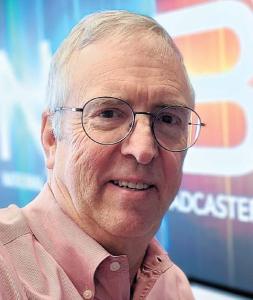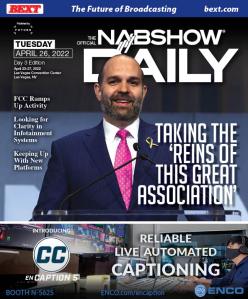
By Randy J. Stine, RADIO WORLD
Ensuring radio is integrated into Google’s open-source Android Automotive system is a priority.
The car dashboard of old has been replaced. The radio knob may be gone but radio broadcasters are working with carmakers to remain visible in the dashboard and not buried in some complicated set of menus on a touch screen.
Radio observers say the pandemic didn’t slow the adoption of tech in the dash as automakers pivot to infotainment centers. In fact, experts say the adoption of systems such as Apple CarPlay and Android Auto accelerated with automakers seeking ways to possibly monetize the dashboard.
The new infotainment center world is already here, picking up where old dashboard technology left off. The influx of in-vehicle entertainment options for drivers and passengers shows no sign of slowing down. Even co-driver displays targeting front seat passengers in connected cars are now being included.
John Clark, executive director of NAB PILOT, says the broadcast industry should be paying very close attention to the overall dashboard experience.
“The entire interface, or interfaces where there are multiple screens, the size of those screens, the options available all make up the overall experience. Radio is certainly a part of that and to remain strong in the dash, the radio experience must be engaging,” Clark said. “That means complete metadata, information that enhances the in-car experience, and services that delight the driver and passengers.”
NAB PILOT, Xperi and several major radio companies, including iHeartMedia, Audacy and Beasley Media Group, are part of a group that has been working to ensure that radio is integrated into Google’s open-source Android Automotive operating system. Clark says preliminary work on the Android Automotive project has been completed with some preliminary conversations with Google.
Android Automotive OS, which is distinct from Android Auto, where the system runs on the user’s phone, is expected to be available in about 50 percent of new cars in the next seven years. General Motors, Ford, Audi and Stellantis are among the car manufacturers with plans to integrate the platform.
Internet Connectivity
Meanwhile, the number of cars that support internet connectivity has been expanding for years and that trend will only accelerate, broadcast insiders say. Combined with more “native” or integrated third-party apps in the dash, many enabled by Android Automotive, it will be even easier for pure-play audio platforms like Spotify and Apple to gain premium positioning in vehicle entertainment platforms, according to Joe D’Angelo, Xperi senior vice president, Broadcast Radio & Digital Audio.

“While broadcasters can offer their content via apps, the defense of over-the-air services requires innovation, speed and consistency on a global scale. DTS AutoStage is the only platform that meets the requirements of listeners, OEMs and broadcasters alike,” D’Angelo said.
Scale, innovation and a sustainable business model will determine how well radio can defend its position and remain the dominant audio source in the car, he said.
D’Angelo points to the NAB Show exhibit floor as another showcase to allow broadcasters a chance to see the next generation of DTS AutoStage, enhanced with recommendations, personalization and an array of addition content, all generated by broadcasters.
Personal Programming
“As consumers expect a more content-first, personalized experience across all media, Xperi has enhanced DTS AutoStage. We’ve leveraged our extensive video and music metadata experience and the DTS AutoStage infrastructure to completely modernize the radio discovery and in-car listening experience,” said D’Angelo. “Drivers will now be offered a personalized, curated list of stations, programming and podcasts to connect with broadcasters like never before without the need for an app.”
David Layer, vice president, advanced engineering for NAB, says the radio industry also should be watching the adoption and roll-out of all-digital AM in the United States.

All-digital AM gives broadcasters a chance to provide a more technologically competitive service with high fidelity — and importantly noise-free — audio, Layer said.
“And perhaps most importantly, all-digital AM has the ability to deliver metadata to listeners through the dashboard, whether it be audio program information, station logos, album art or revenue-generating, metadata-enhanced advertisements,” said Layer.


